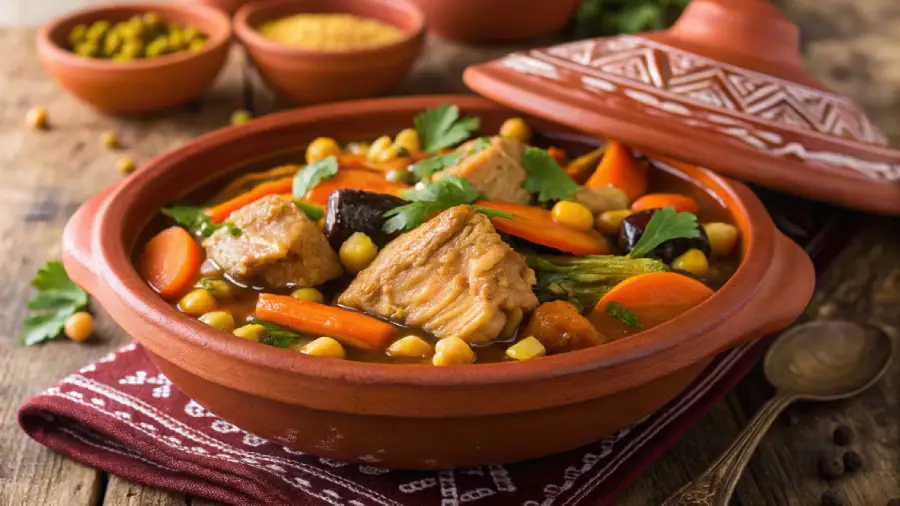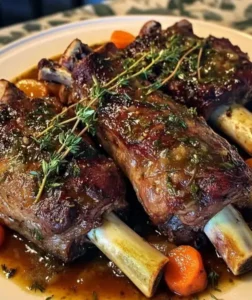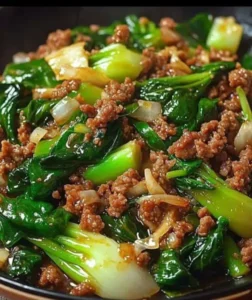Tagine
Tajine is a traditional North African dish, particularly popular in Morocco, named after the special clay pot in which it’s cooked. It’s a slow-cooked stew that combines tender meat (usually chicken or lamb), vegetables, dried fruits, and a mix of aromatic spices, resulting in rich, flavorful layers. The dish is often served with couscous or bread to soak up the delicious sauce.
Ingredients:
- 1 kg chicken or lamb (cut into pieces)
- 1 onion, chopped
- 2 garlic cloves, minced
- 2 carrots, sliced
- 2 zucchinis, chopped
- 1 cup dried apricots or prunes
- 1 can chickpeas, drained
- 2 tbsp olive oil
- 1 tsp ground cumin
- 1 tsp ground cinnamon
- 1 tsp ground ginger
- 1 tsp turmeric
- Salt and pepper, to taste
- Fresh cilantro for garnish
- 500ml chicken or vegetable broth
How to cook:
- Heat olive oil in a tajine or heavy pot over medium heat. Brown the chicken or lamb pieces on all sides.
- Add the chopped onion and garlic, cooking until softened.
- Sprinkle in the cumin, cinnamon, ginger, turmeric, salt, and pepper, stirring to coat the meat and onions with the spices.
- Add the carrots, zucchinis, dried fruit, and chickpeas. Pour in the broth, then cover and simmer for about 1 to 1.5 hours, until the meat is tender and the flavors have melded together.
- Garnish with fresh cilantro before serving, and serve with couscous or bread.
History :
Tajine is a cornerstone of Moroccan cuisine with deep roots in the Berber culture of North Africa. The dish takes its name from the unique clay pot in which it’s traditionally cooked, which has a conical lid that helps retain moisture during slow cooking. Historically, tajines were made using locally available ingredients, such as lamb, chicken, vegetables, and dried fruits, often influenced by the spice trade that passed through Morocco. This stew was originally a way to make tough meats tender, and it became a symbol of hospitality and communal meals. Over time, tajine spread throughout North Africa, each region adding its own variations, but it remains a beloved dish, known for its rich, complex flavors and comforting qualities.





